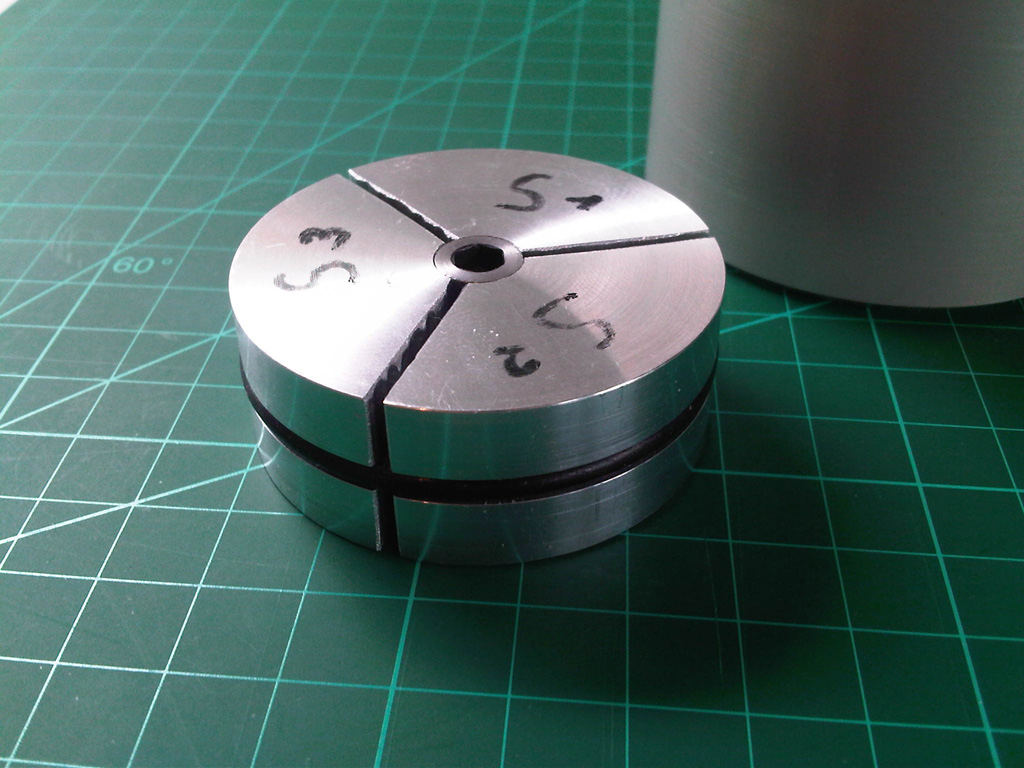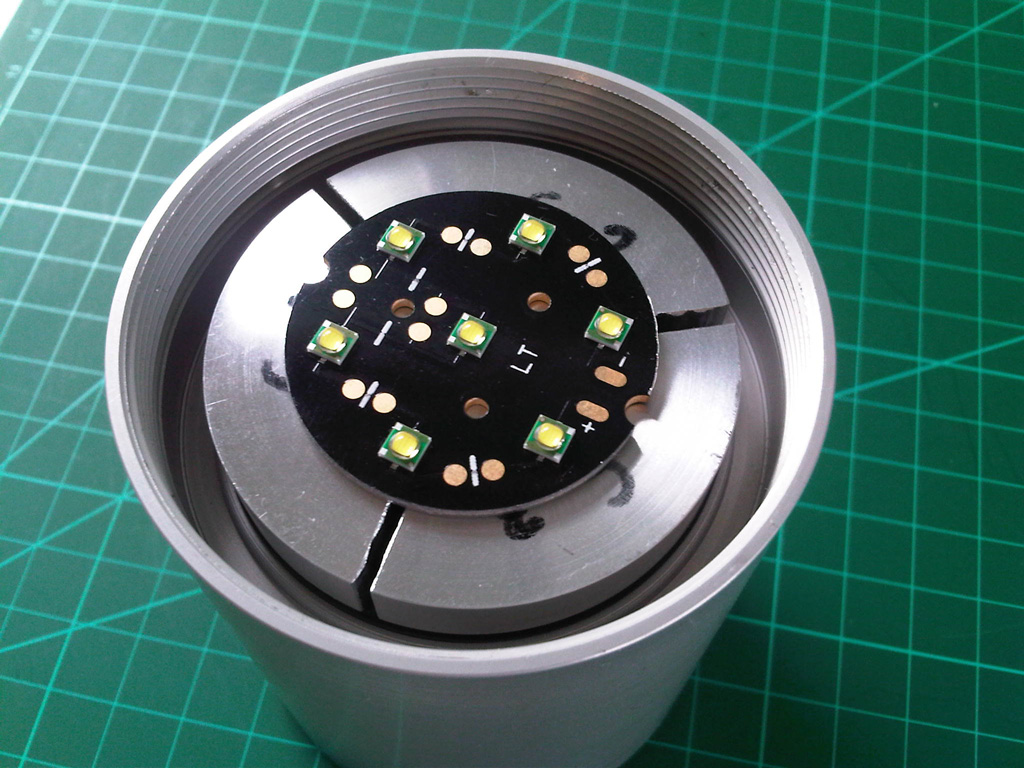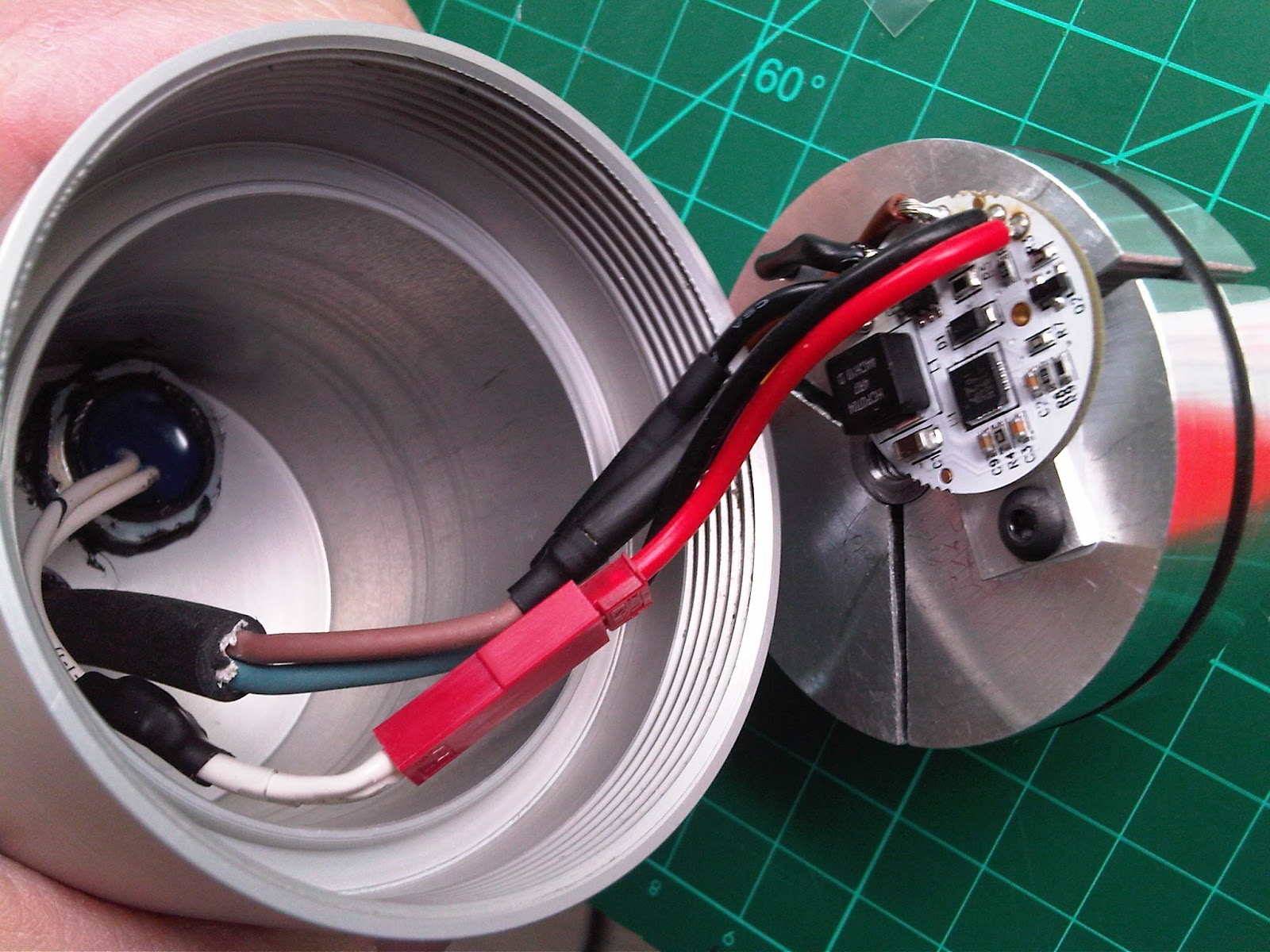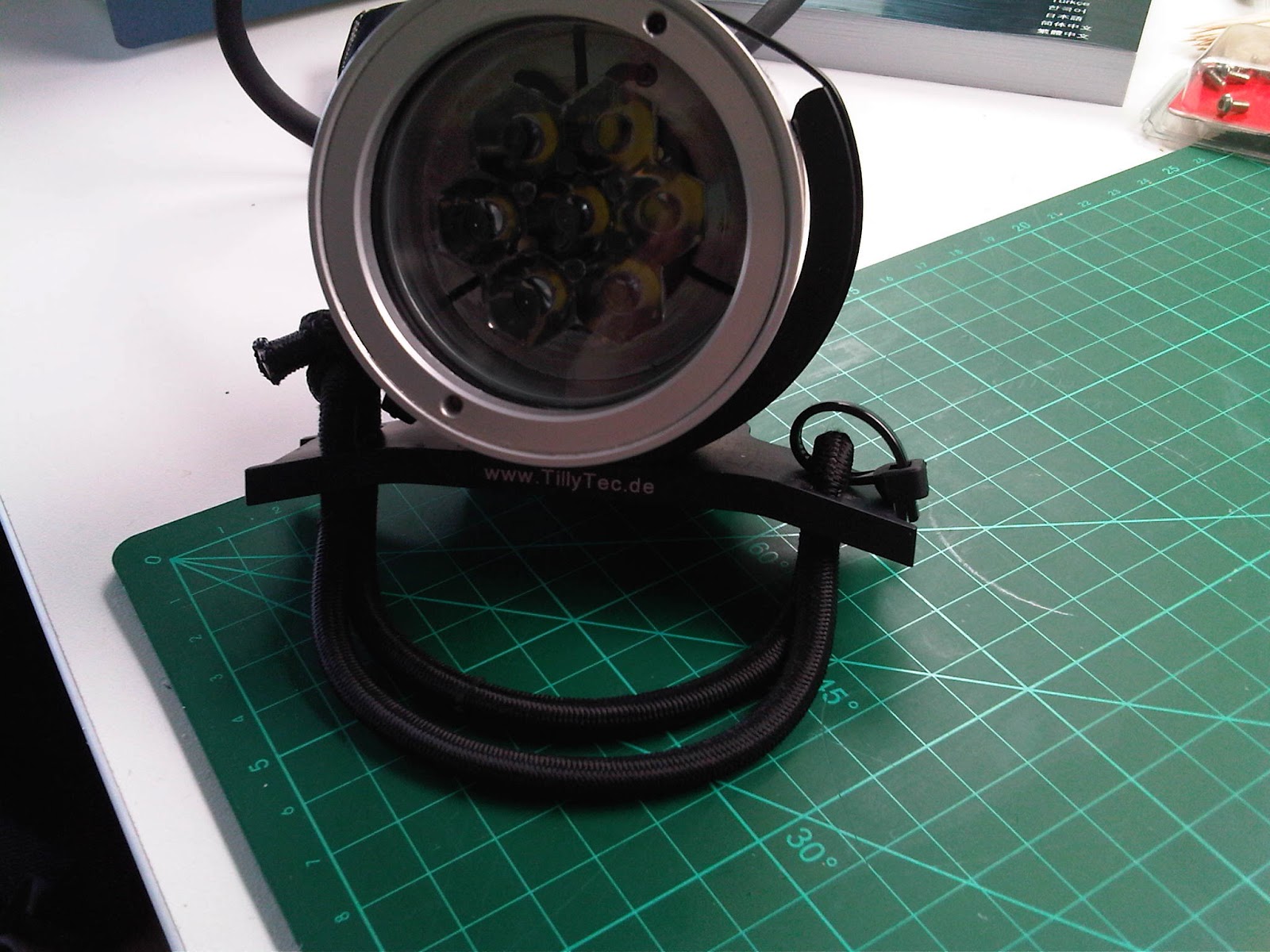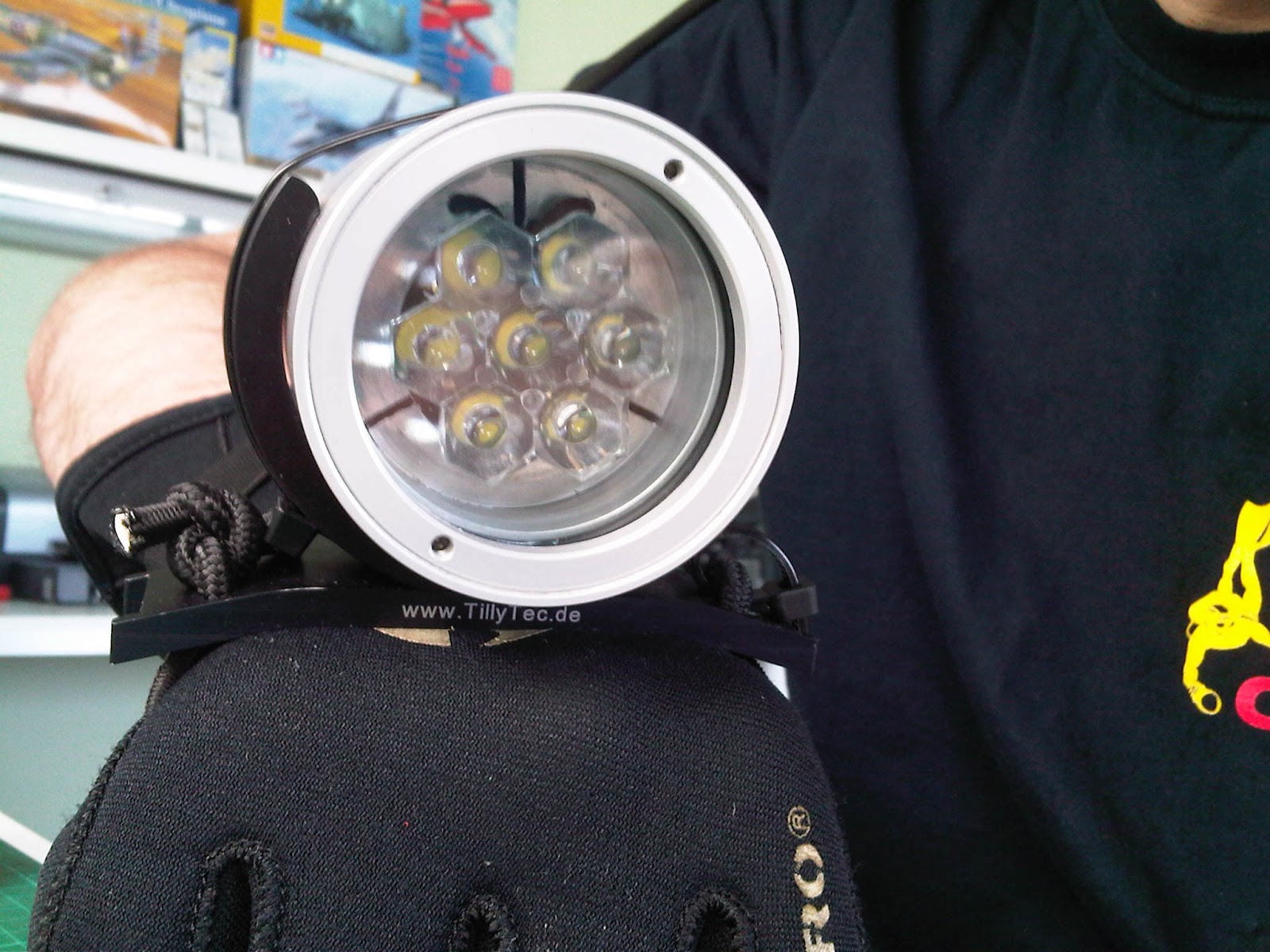Good work ! - nice heat transfer , but middle led should be OFF , OR you have to put in middle cooper cork instead instead of that tube (same thing as Intel processor heatsinks .
Don't worry abour wires , you could drill hole somewhere between leds where is no Cu trace on AlPCB. Important at leds is that they have good thermal transfer in range of few milimeters from semiconductor joint ..... Al PCB also even more distribute heat equally but not to heat neighbours leds.
When wou made next time heatsink like that ...it is
very good design , but you don't need to cut segments through , enough is only 1/2 - 2/3 max of cylinder only to transfer and distribute heat equally .
Be sure that heatsink is inverted U hollow shape not full . (you don't want to collect and store heat in mass (Q=m*cp*dT ; A=Q*t)
------------------------------------------------------------------------------------------------------
OOT : (I work with some very special welding machines (hot stacking ) these days at work , I'll put energy of 2500W @ 1000A @ 55ms (constant power mode) in segments with cca 1g turned with enlameted wire 0,22mm (1turn/2turn ) whole thing have diameter 15mm and high 6mm with 6 these segments.
(carbon commutators - that on picture is big and heavy one

Point of that is that with special approach it is possible to transfer pretty quick .


